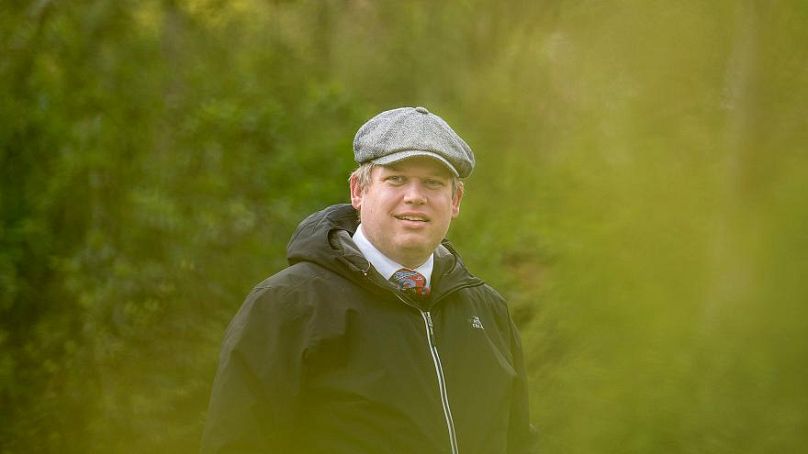Climate and immigration are key concerns for voters, an expert told Euronews.
What’s happening?
Denmark will head to the polls on Wednesday (June 5) to choose a new parliament — the country’s second election in a fortnight.
What’s the background?
Danes have only just voted in European Parliament elections, which saw a big drop in support for the far-right Danish People’s Party (DPP). They won in 2014 with 26.6% of the vote but that more than halved to 10.76% this time.
DPP is not in Denmark’s ruling coalition, which is made up of Denmark’s Liberal Party (Venstre), the Liberal Alliance and the Conservative People’s Party.
But the coalition does rely on parliamentary support from the anti-immigration DPP and this has been reflected by government policy.
Read more: Meet the far-right leader who wants to deport all Muslims from Denmark
Since the refugee crisis in 2015, Denmark has accepted fewer migrants than its neighbours and taken a tougher line on immigration.
Parliament last year approved moves to ban the wearing of the Islamic burqa and niqab in public and hold foreign criminals on a tiny island.
Who are the main runners and riders?
Coalition governments are a fact of life in Denmark and the main parties are organised in left-wing (red) and right-wing (blue).
Blue block
Danish People’s Party: Anti-immigration party who supported Denmark’s ruling coalition and came second in last general election.
Denmark’s Liberal Party (Venstre): Ruled in a three-party coalition and are led by Danish Prime Minister Lars Løkke Rasmussen.
Liberal Alliance: Another member of the ruling coalition since November 2016 and promotes welfare cuts.
The Conservative People’s Party: The junior member of Denmark’s ruling coalition, led by Denmark’s justice minister, Søren Pape Poulsen.
Red block
Social Democratic Party: Centre-left party that has been in opposition despite winning the largest vote share in last year’s election.
Red-Green Alliance: Far-left party that combines socialism and environmentalism.
Socialist People’s Party: Like the Red-Green Alliance, it mixes green and socialist values.
The Alternative: Green political party that is also pro-European.
Danish Social Liberal Party: Centrist party that is predicted to improve on its 2015 showing.
What’s expected to happen?
The polls suggest there will be a resounding victory for the red block opposition to the current government, according to Rune Stubager, an expert on Danish politics from Aarhus University.
“Still the likeliest prime minister is the leader of the social democrats Mette Frederiksen,” said Professor Stubager
“But I’m not sure the negotiations to put her into office will be easy at all, because not only have the green parties said they won’t back her but the social liberals have said if they don’t get concessions, including on immigration, they will contemplate voting for a motion of no confidence [in Frederiksen].”
“It looks as if it’ll be one hell of a poker game, I guess you could say, after the election,” he added.
What are the key issues for voters?
Immigration is a concern for voters ahead of the election, according to Stubager.
While support for anti-immigration party DPP has dropped off, that’s in part because mainstream parties have adopted some of their policies.
For example, the social democrats — who lead in the polls — have pledged not to row back on the country’s tougher line on immigration.
Read more: How are people planning to vote ahead of the June 5 poll?
The campaign has seen the emergence of a new far-right party, Hard Line, whose leader Rasmus Paludan has been convicted of racism, accused of Nazi ties and is known for burnings of the Quran.
Paludan wants to deport all Muslims from Denmark.
“One effect they have had for sure is that the Danish People’s Party has been pushed out of their comfort zone in the sense that they are no longer the party with the most right-wing position on immigration and that means they find themselves in the position of having to explain to voters why they don’t support these more extreme measures,” said Professor Stubager.
Hard Line is expected to get around 2.5% of voters but this could be higher because voters may not want to admit to pollsters they support such a party.
“It’s certainly been a surprise to most observers that they should get such a following. The uncertainty for this party is considerably higher than other parties, simply because it’s a new party and we know from previous experience that polls have difficulty in capturing parties that are seen as socially undesirable.”
The environment is also high-up on voters’ minds.
“The issue of climate tops all polls asking people what are the most important issues in the election," said Prof Stubager.
“This is the first time ever that we’ve seen that.
“Discussions about how to reform the healthcare sector is also high on the agenda, as is pension scheme and retiring early.”
Cuts to healthcare services, which include everything from free doctor appointments to cancer treatment, have led to the closure of a quarter of state hospitals in the past decade alone.
A recent survey showed that more than half of Danes don’t trust the public health service to offer the right treatment. As a consequence, the proportion of the 5.7 million Danish population taking out private health insurance has jumped to 33% from 4% in 2003, according to trade organization Insurance & Pension Denmark.
Other cuts over the past 10 years have led to the closure of a fifth of state schools, while spending per person above 65 years on services such as care homes, cleaning and rehabilitation after illness has dropped by a quarter.
Since the early 2000s, governments have also pushed through unpopular measures to encourage people to work longer.
They include gradually increasing the retirement age to 73 - the highest in the world - in decades to come from 65 currently, phasing out early retirement benefits and cutting unemployment benefits to two years from four.












